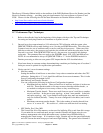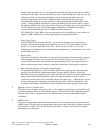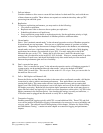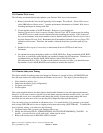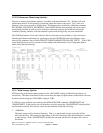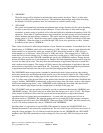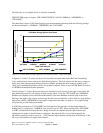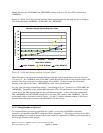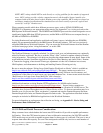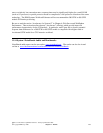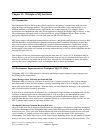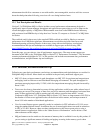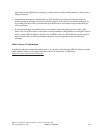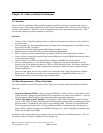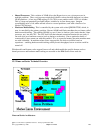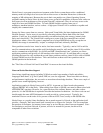
NOTE: MCU ratings should NOT be used directly as a sizing guideline for the number of supported
users. MCU ratings provide a relative comparison metric which enables System i models to be
compared with each other based on their Domino processing capability. MCU ratings are based on
an industry standard workload and the simulated users do not necessarily represent a typical load
exerted by “real life” Domino users.
When comparing models which have different processors types, such as SSTAR, POWER4 and
POWER5, it is important to use appropriate rating metrics (see Appendix C) or a sizing tool such as the
IBM Systems Workload Estimator. The POWER4 and POWER5 processors have been designed to run at
significantly higher MHz than SSTAR processors, and the MHz on SSTAR does not compare directly to
the MHz on POWER4 or POWER5.
For sizing Domino mail and application workloads on System i servers, including the new POWER6
models, the recommended method is the IBM Systems Workload Estimator. This tool was previously
called the IBM eServer Workload Estimator. You can access the Workload Estimator from the Domino
on iSeries home page (select “sizing Information”) or at this URL:
http://www.ibm.com/eserver/iseries/support/estimator
.
The Workload Estimator is typically refreshed 3 to 4 times each year, and enhancements are continually
added for Domino workloads. Be sure to read the “What’s New” section for updates related to Domino
sizing information. The estimator's rich help text describes the enhancements in more detail. Some of the
recent additions include: SameTime Application Profiles for Chat, Meeting, and Audio/Video, Domino
6, Transaction Logging, a heavier mail client type, adjustments to take size of database into account,
LPAR updates, and enhancement to defining and handling Domino Clustering activity.
Be sure to note the redpaper “Sizing Large-Scale Domino Workloads on iSeries” which is available at:
http://www.redbooks.ibm.com/redpapers/pdfs/redp3802.pdf
. The paper contains test results for a
variety of experiments such as for mail and calendar workloads using different sized documents, and
comparisons of the effect of a small versus very large mail database size. A more recent article describes
“Best Practices for Large Lotus Notes Mail Files” and is found at:
http://www.ibm.com/developerworks/lotus/library/notes-mail-files/
Additional information on sizing Domino HTTP applications for AS/400 can be found at
http://www.ibm.com/servers/eserver/iseries/domino/d4appsz.html
. Several sizing examples are
provided that represent typical Web-enabled applications running on a Domino for AS/400 server. The
examples show projected throughput rates for various iSeries servers. To observe transaction rates for a
Domino sever you can use the “show stat domino” command and note the Domino.Requests.Per1hour,
Domino.Requests.Per1min, and Domino.Requests.Per5min results. The applications described in these
examples are included as IBM defined applications in the Workload Estimator.
For more information on performance data collection and sizing, see Appendix B - iSeries Sizing and
Performance Data Collection Tools.
11.13 LPAR and Partial Processor Considerations
Many customers have asked whether the lowest rated i520 models will provide acceptable performance
for Domino. Given the CPU intensive nature of most collaborative transactions, the 500 CPW and 600
CPW models may not provide acceptable response times for these types of workloads. The issue is one of
response time rather than capacity. So even if the anticipated workload only involves a small number of
IBM i 6.1 Performance Capabilities Reference - January/April/October 2008
© Copyright IBM Corp. 2008 Chapter 11 - Domino 172



